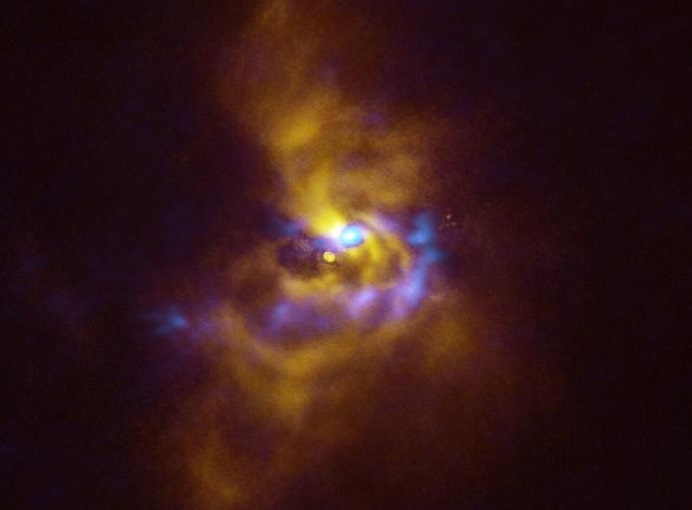Image Shows a Humongous Amount of Dust, Revealing How Planets Form
Posted on Categories Discover Magazine

Planets form from dust and gas. But how, exactly? Under the more popular accretion model, they accrete over millions of years as one particle collides with another.
Under the not-so-popular gravitational instability model, something more decisive occurs. Dust and fragments gather in an area until they undergo a kind of gravitational collapse. The force pulling them together becomes greater than whatever is keeping them apart, and a new planet begins to coalesce.
Capturing a Collapse?
A new image released on July 25, 2023, appears to provide direct evidence of the second model, something astronomy has so far lacked. The snapshot from The European Southern Observatory’s Very Large Telescope shows a massive vortex of matter in orbit around a fitful young star. The vortex’s spiral arms – which extend further than the width of our own solar system – contain clumps of mass.
This rapidly changing star system sits 5,000 light years from our own in the constellation of Monoceros, a unicorn-like animal. Astronomers have watched the young star since it increased in brightness more than 20 times in 2014.
“This discovery is truly captivating as it marks the very first detection of clumps around a young star that have the potential to give rise to giant planets,” said Alice Zurlo, a researcher at the Universidad Diego Portales, in a statement.
Interesting Arms
To investigate the spiral arms more closely, the team checked archived observations already made by the Atacama Large Millimeter/Submillimeter Array in Chile (ALMA). The massive telescope relies on 66 different antennae to detect electromagnetic radiation from faraway sources.
“With ALMA, it became apparent that the spiral arms are undergoing fragmentation, resulting in the formation of clumps with masses akin to those of planets,” said Zurlo.
Until now, no one had ever made a direct observation of gravitational instability happening at planetary scales, according to Philipp Weber, a researcher at the University of Santiago who led the study published in The Astrophysical Journal Letters.
More Observations
“Our group has been searching for signs of how planets form for over 10 years, and we couldn’t be more thrilled about this incredible discovery,” said Sebastián Pérez from the University of Santiago, in a statement.
The team plans to use more instruments at the European Southern Observatory to probe the dust further, including the Extremely Large Telescope (ELT) under construction in Chile’s Atacama Desert.
“The ELT will enable the exploration of the chemical complexity surrounding these clumps, helping us find out more about the composition of the material from which potential planets are forming,” said Weber.
Read More: Did Massive Stars Composed of Dark Matter Fuel the Early Universe?